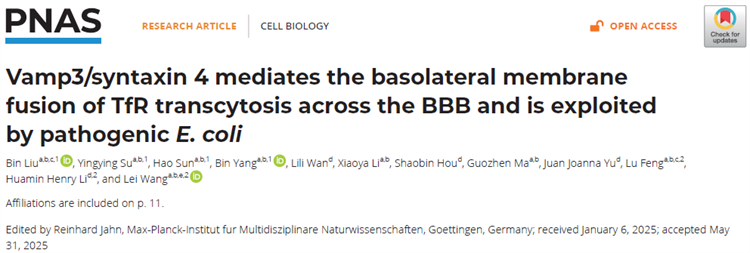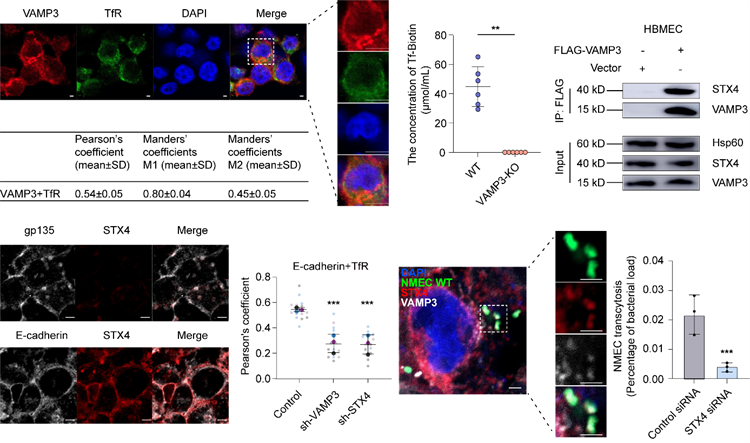Nankai University Research Team Makes Breakthrough in Mechanism of Crossing BBB

Recently, a research team led by Professors Wang Lei and Feng Lu from the National Key Laboratory of Intelligent Tracking and Forecasting for Infectious Diseases/ TEDA Institute of Biological Sciences and Biotechnology at Nankai University has made a major breakthrough in the study of the blood–brain barrier (BBB). Their work systematically elucidates the molecular mechanism underlying the fusion of transport vesicles with the basolateral membrane of brain microvascular endothelial cells, a key final step in transcytosis across the BBB, and confirms its direct role in regulating transcytosis efficiency. This discovery addresses a long-standing gap in BBB study and offers new strategies for enhancing drug delivery to the brain. The findings were published on July 3 in the Proceedings of the National Academy of Sciences (PNAS).

VAMP3–Syntaxin 4 interaction mediates the fusion of transport vesicles with the basolateral membrane of brain microvascular endothelial cells during transcytosis across the BBB.
The team demonstrated that the interaction between VAMP3 and Syntaxin 4 mediates the fusion of transport vesicles with the basolateral (brain-facing) membrane of brain endothelial cells, enabling the release of iron into the brain. This step represents the terminal and most crucial stage in iron transcytosis across the BBB. Moreover, they found that upregulating VAMP3 and Syntaxin 4 expression significantly improves iron transport efficiency, suggesting that these proteins may serve as promising targets to boost therapeutic delivery to the central nervous system.
Bacterial meningitis remains a serious global public health concern due to its high mortality rate. Building on their previous work (PNAS, 2023), which showed that meningitic Escherichia coli crosses the BBB by hijacking the host’s iron transport pathway, the researchers now reveal that the pathogen enhances its ability to penetrate the brain by upregulating the expression of VAMP3 and Syntaxin 4 via the TLR4–TRIF signaling pathway. These findings identify a potential molecular target for developing strategies to prevent and treat bacterial meningitis.
This is the fifth PNAS paper published by Professors Wang Lei and Feng Lu on the pathogenesis of microbial infections. The study was co-corresponded by Professors Wang Lei, Feng Lu, and Li Huamin of the U.S. National Institute of Allergy and Infectious Diseases. Professor Liu Bin, doctoral student Su Yingying, postdoctoral researcher Sun Hao, and Associate Professor Yang Bin are listed as co-first authors.
Full-paper link: www.pnas.org/doi/10.1073/pnas.2500285122
(Edited and translated by Nankai News Team.)









